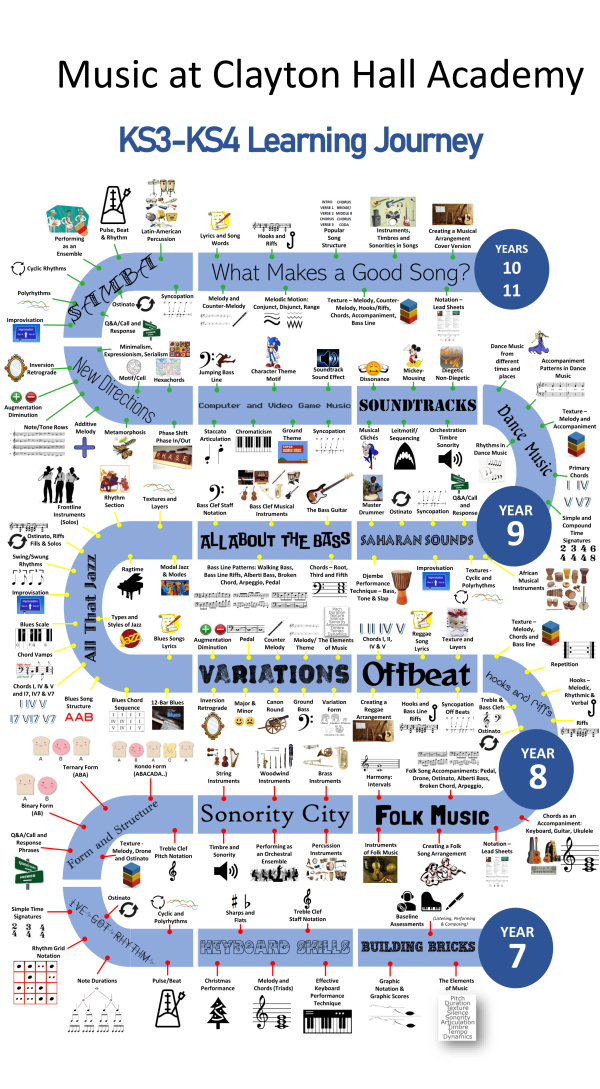Music
Our Curriculum Intent
Our curriculum is designed to offer exciting and stimulating opportunities, differentiated to meet the needs of all our learners. At the heart of this is the teaching of core skills, knowledge, concepts and values which are spiralled and recurring across all Years. Equally important is the development of inter-personal skills that will contribute to the development of happy, well-rounded students who can thrive. We aim to build on prior learning with the aim of developing responsible, independent and confident musicians (RIC) who can adapt and apply their skills within a range of genre and instruments. This gives students the best opportunity to develop a genuine love of the subject as well as being able to showcase their talent and develop their skills. As well as a stimulating class-based learning environment, we offer our students a rich and diverse extra-curricular programme including inclusive lunch and after school clubs aimed at all, regardless of ability as well as opportunities for performance at the highest level through peripatetic music teachers, concerts within the trust and local communities, masterclasses, whole school shows, music platforms, large sale choral events, various ensembles such as samba, guitar, choir, duets/trios/quartets and small orchestral ensembles, culminating in a music tour.

Email Links
To find out more about the curriculum we are studying please contact staff via email













